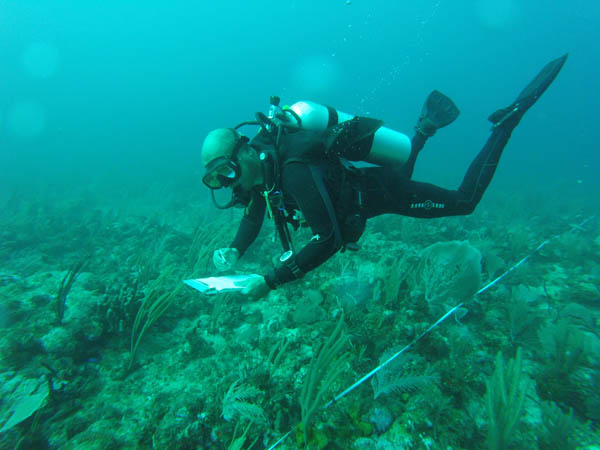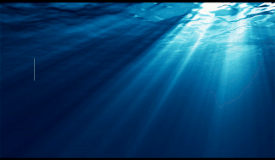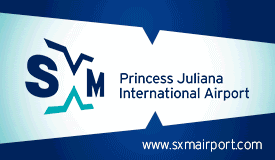 SABA:--- The St. Maarten Nature Foundation recently joined with the World Wildlife Fund, the IMARES Research Institute of Wageningen University, the Dutch Institute for Oceanographic Research NIOZ and other scientific and ocean conservation organizations for a week long expedition to map and monitor one of the world’s largest submerged coral atolls; the Saba Bank.
SABA:--- The St. Maarten Nature Foundation recently joined with the World Wildlife Fund, the IMARES Research Institute of Wageningen University, the Dutch Institute for Oceanographic Research NIOZ and other scientific and ocean conservation organizations for a week long expedition to map and monitor one of the world’s largest submerged coral atolls; the Saba Bank.
The Expedition, which took place on the Expedition Vessel Caribbean Explorer, monitored fish populations and densities, coral reefs and sponges, and water quality along various points of the Saba Bank.
“My specific job, together with my colleagues Ingrid Van Beek of IMARES and Steve Piontek of the Statia Fisheries Department, was to conduct underwater fish transacts, which is a fancy word for doing fish counts along a fifty-meter length of tape at various depths and at various locations on the Saba Bank. We looked for various species ranging from conch to grouper, snapper to damsel fish and from chromis to what is undoubtedly everyone’s favourite animal to see: sharks,” commented Tadzio Bervoets of the Nature Foundation.
The presence of sharks is of particular importance considering that the Dutch Caribbean Nature Alliance Shark Conservation Project, of which the Saba Conservation Foundation and the Nature Foundation are part of, has embarked on conserving sharks on all six islands of the Dutch Caribbean.
“On the 1st of September 2015 Dutch State Secretary Sharon Dijksma declared the EEZ of Bonaire and Saba, which includes the Saba Bank, as a shark and marine mammal sanctuary. The area, called the Yarari Sanctuary after the Arawak Indian word for a ‘fine place’, is committed to the effective protection of sharks and rays. During this expedition we have seen no shortage of them. On almost every dive we’ve had sharks come to check out what we were doing. But there is still work to do. During some monitoring dives we noticed nurse sharks caught in lobster and fish traps, reinforcing the need to work with local stakeholders and especially with fishermen, in ensuring that these globally threatened animals are protected,” commented Bervoets.
The Saba Bank, a two-thousand kilometre submerged atoll, is the largest protected area in the Kingdom of the Netherlands and one of the most important fisheries areas for the North Eastern Caribbean, with many of the species caught making their way to restaurants on St. Maarten and other destinations.
The Expedition continues this week with a focus on water quality and hydrological monitoring. The remainder of the expedition as well as previous posts can be followed live via the Expedition Blog http://expeditiesababank.blogspot.nl.













